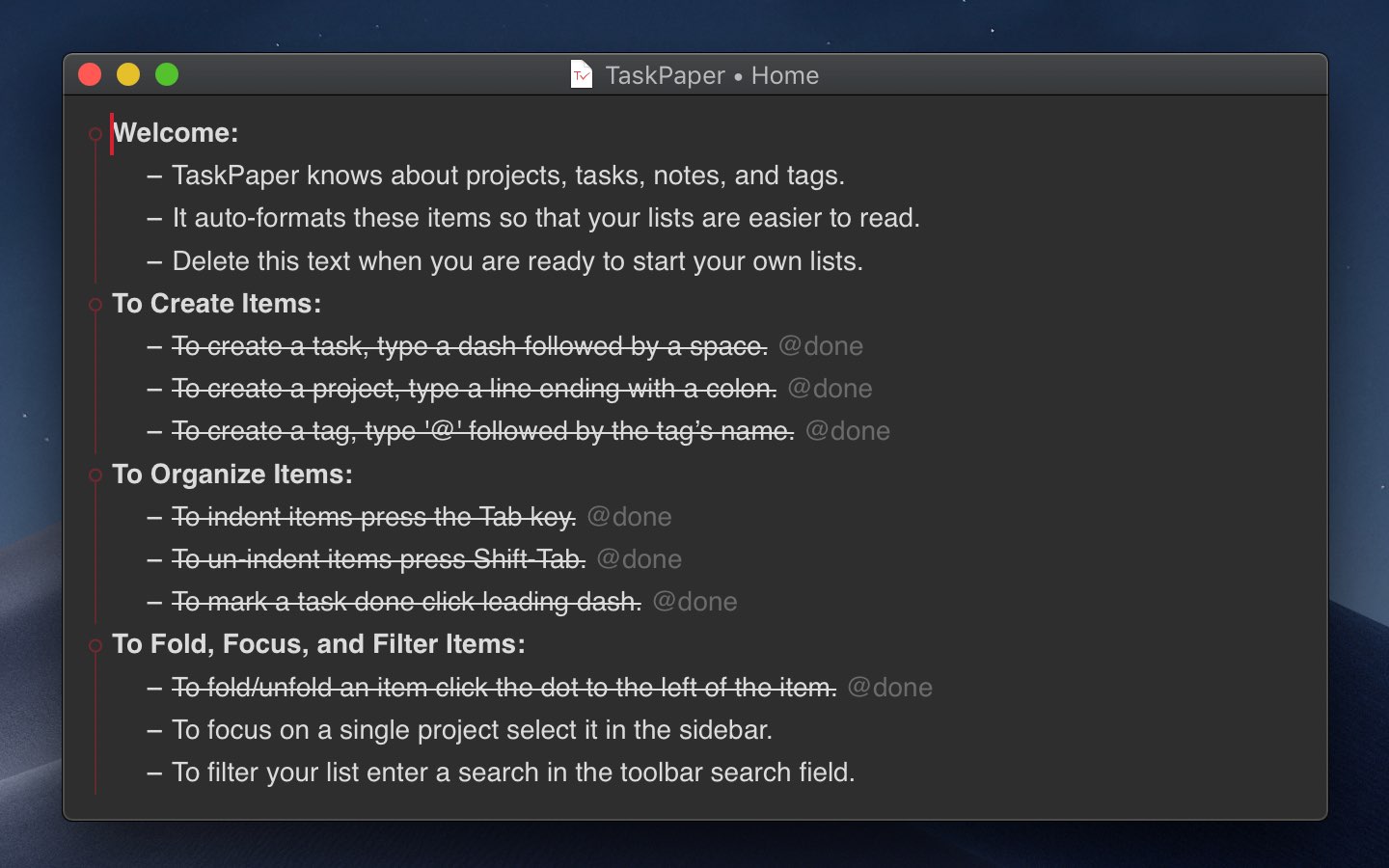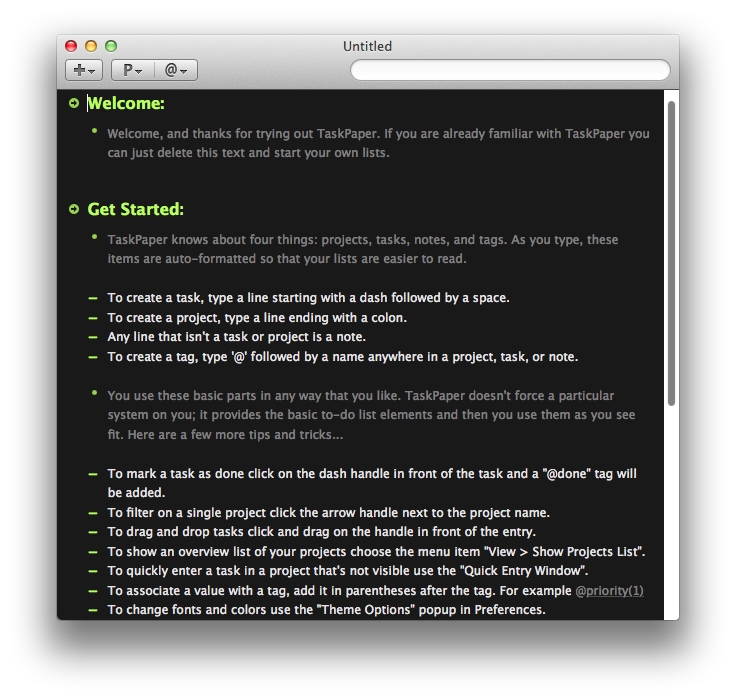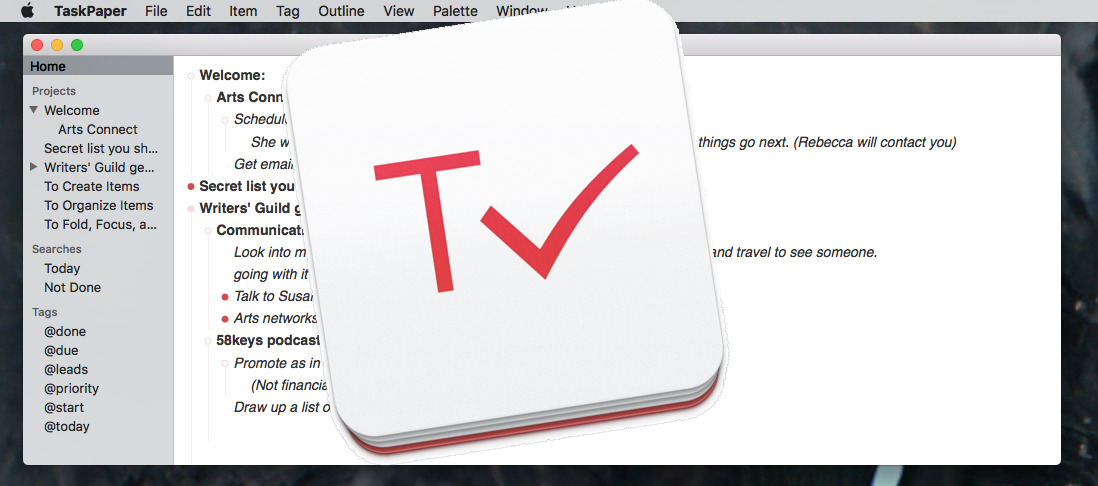

When point is at the beginning of the buffer, rotate the entire buffer among the two states:

The action of the command depends on the current cursor location. The main folding command C-TAB ( taskpaper-cycle) changes the visibility of items in the buffer cycling through the most important states. You can expand and collapse parts of the outline to control the level of detail that you see. The following commands change the type of the current item.Ĭ-c C-f p: Format item under cursor as project ( taskpaper-item-format-as-project).Ĭ-c C-f t: Format item under cursor as task ( taskpaper-item-format-as-task).Ĭ-c C-f n: Format item under cursor as note ( taskpaper-item-format-as-note). M-RET: Create a new task with the same level as the item under cursor ( taskpaper-new-task-same-level). RET: Create a new item with the same level as the one under cursor ( taskpaper-new-item-same-level). The following commands auto-format and indent you items as you type. If you don't need it, simply hit RET again to remove the indentation. When you hit RET TaskPaper mode will auto-indent your items. In TaskPaper mode each line makes a new item. First, configure package.el and the MELPA repository by adding the following to your init file:
Taskpaper review install#
The recommended way to install TaskPaper mode is to install the package from MELPA using package.el. Installation and Activation Using Package Manager Documentation strings to each function are available via C-h f ( describe-function), individual key bindings can be investigated with C-h k ( describe-key), and a complete list of key bindings is available using C-h m ( describe-mode). You can also use Emacs' help commands to access the usual built-in documentation. For more advanced customization, hacking and scripting see the Scripting Guide.
Taskpaper review manual#
This manual explains installation, usage, and basic customization of TaskPaper mode package. For querying a collection of TaskPaper files, TaskPaper mode also includes a powerful Agenda mode. Special commands also provided for outline-aware filtering, tags manipulation, sorting, refiling, and archiving of items. Visibility cycling and structure editing help to work with the outline structure. TaskPaper mode is implemented on top of Outline mode. The system doesn't force any particular workflow on you it provides basic list making elements for you to use as you see fit. Empty lines are ignored when calculating ownership. The nesting can go as deep as you need it to be. Projects, tasks, and notes own all items that are indented underneath them. For instance, if you indent one task under another task, then it is considered a subtask. Indentation level (with tabs, not spaces) defines ownership.

Tags can optionally have a value in parentheses after the tag name. A note can have zero or more tags anywhere on the line.Ī tag consists of an at symbol ( preceded by a space and followed by a tag name. Tags can exist after the colon, but if any non-tag text is present, then it won't be recognized as a project.Ī note is any non-blank line that doesn't match the task or project rules. A task can have zero or more tags anywhere on the line (not just trailing at the end).Ī project is a line that isn't a task and ends with a colon ( :) followed by a newline. Print handouts Review meeting notes file format is fairly simple:įiles are expected to use the UTF-8 encoding and use a newline ( \n) to separate lines.Įach line makes a new item: project, task, or note.Ī task is a line that begins with a hyphen ( -) followed by a space, which can optionally be prefixed (i.e. Project meeting: Select and invite participants Prepare and distribute meeting agenda


 0 kommentar(er)
0 kommentar(er)
